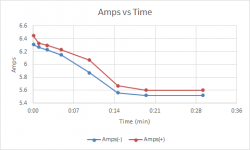I have an Aquarite chlorine generator that's probably around 20 years old but had its board replaced within the last 5 years. My Hayward T-CELL-15 started failing after only 2.5 years. Due to the significant increase in prices and low availability on Hayward's salt cells, I decided to give the salt cells sold by Salt Solutions Inc a try. These are essentially remanufactured Hayward cells. Long story short, I am now on my 3rd replacement salt cell from this company. After resetting the salt readings, they initially show a salt level of 3,000 ppm. However, after running for several hours, the instant salt readings drop down to around 2,400 - 2,500 ppm. This is causing the average salt level to read around 2,800 - 2,900 ppm. I had my salt level tested at the pool store, and they said it was 3,400. I bought new salt strips and tried a couple of them, and they read a little above 3,200.
Any ideas why the instant salt reading would be so low after running for several hours? My concern is that if this is happening on brand new cells, it will potentially start reading lower as time goes on and eventually stop generating chlorine. Should I be concerned?
Any ideas why the instant salt reading would be so low after running for several hours? My concern is that if this is happening on brand new cells, it will potentially start reading lower as time goes on and eventually stop generating chlorine. Should I be concerned?


